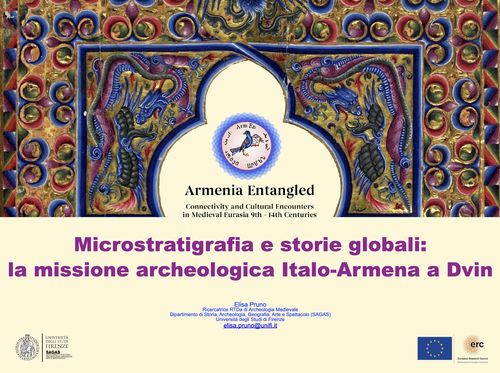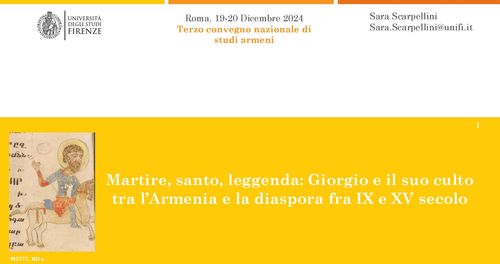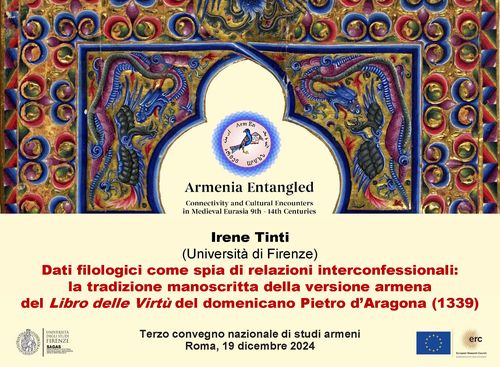ArmEn and HAI Mobility Members at the Terzo convegno nazionale di studi armeni (3rd National Conference in Armenian Studies), Rome
On 19 and 20 December 2024 a few ArmEn and HAI Mobility team members took part in the 3rd National Conference in Armenian Studies, organised by Marco Bais and Marco Fattori at the University of Rome ‒ La Sapienza. The general theme of the conference was Armeni e Armenie tra madrepatria e diaspora (Armenians and Armenias between the Motherland and the Diaspora).
The full programme of the event can be downloaded here.
Michele Nucciotti delivered a paper entitled I paesaggi della Via della Seta nell'Armenia medievale: Archeologia leggera a Yeghegis in Vayots Dzor [Silk Road Landscapes in Medieval Armenia: Light Archaeology at Yeghegis in Vayots Dzor]. The presentation showcased the results of territorial archaeological research conducted in the Vayots Dzor region, focusing on the cultural processes that shaped the landscapes of the Silk Road between the 9th and 14th centuries. Particular attention was devoted to the use of Light (non-destructive) methods of archaeological analysis applied to relevant case studies from Syuni (9th century), Bagratid (10th-11th centuries) and Mongol-Orbelian (13th-14th centuries) religious and civil buildings in the area of Yeghegis, in order to show how local and imperial actors materialized their territorial control over Vayots Dzor in the 9th-14th centuries. The paper also addressed the issue of Site Custody Activism, exploring the ethical and institutional responsibilities of academic research institutions regarding the conservation of the archaeological sites they investigate.

Elisa Pruno gave a paper entitled Microstratigrafia e storie globali: la missione archeologica Italo-Armena a Dvin [Microstratigraphy and Global Histories: the Italian-Armenian Archaeological Mission in Dvin], aimed at presenting the data of the three excavation campaigns conducted in Dvin by the Italian mission. In particular, the characteristics of the stratigraphic work were highlighted, which allows for the valorization of all archaeological contexts, both those of life and abandonment.

Sara Scarpellini’s paper Martire, santo, leggenda: Giorgio e il suo culto tra l’Armenia e la diaspora fra IX e XV s. [Martyr, Saint, Legend : George and his Cult between Armenia and the Diaspora between the 9th and 15th cc.] presented the most relevant texts concerning St. George in Armenian hagiographic collections, highlighting the circulation of these documents between the homeland, Armenia, and several Armenian diasporic communities between the Southern Caucasus, Eastern Anatolia and Northern Mesopotamia.

Irene Tinti gave a paper titled Dati filologici come spia di relazioni interconfessionali: la tradizione manoscritta della versione armena del Libro delle Virtù del domenicano Pietro d’Aragona (1339) [Philological Data as Clues to Trace Interconfessional Relations: the Manuscript Tradition of the Armenian Version of the Book of Virtues by the Dominican Peter of Aragon (1339)]. The presentation addressed the manuscript tradition of a popular Latinophile text, a compilation on moral theology based on European (Catholic) sources, and what its Armenian reception and afterlife can reveal about confessional and cultural entanglements in the Medieval Caucasus.
Last update
29.12.2024
